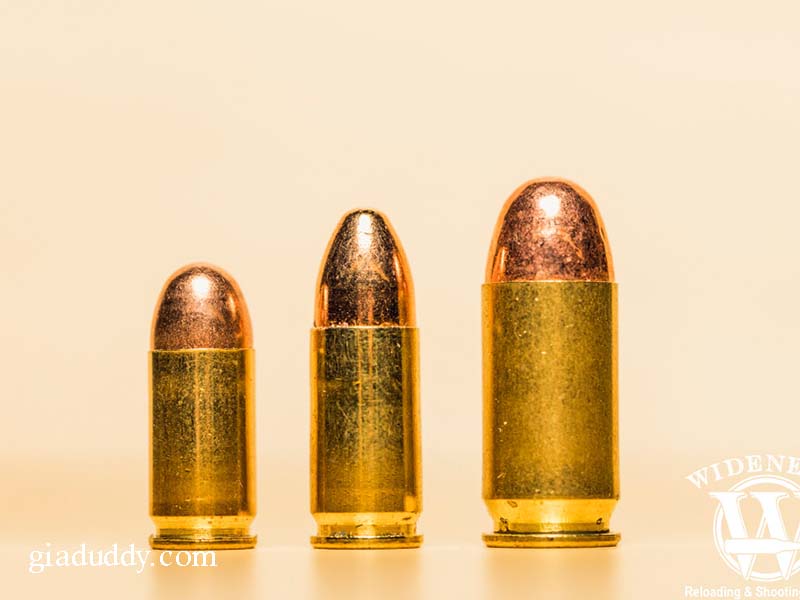When discussing the speed of a bullet, it’s essential to understand the factors that determine how fast a bullet travels. From military-grade firearms to handguns, the speed at which a bullet travels can vary significantly. In this article, we’ll explore how fast a bullet travels, the factors influencing bullet speed, and how different types of ammunition affect the velocity. This will provide you with a comprehensive understanding of how bullet travel works and why it matters for both military and civilian applications.
Bullet Travel
The Basics
The speed at which a bullet travels is commonly measured in feet per second (fps) or meters per second (m/s). Bullet travel speeds can vary based on the type of gun, the caliber of the bullet, and the propellant used. For instance, a bullet from a standard handgun might travel at 1,000 feet per second, while a bullet from a high-velocity rifle could exceed 4,000 feet per second.
Key Factors That Affect Bullet Travel Speed
Several key factors influence how fast a bullet travels. These factors include the gun type, the bullet’s design, and the amount of propellant in the cartridge. Let’s break down each of these elements to see how they impact bullet travel speed.
- Type of Firearm
The firearm from which the bullet is fired is one of the most significant contributors to bullet speed. Handguns, which are smaller and use less powerful ammunition, typically fire bullets at slower speeds compared to rifles, which are designed for longer-range shooting and higher velocity.- Handguns: Most handguns, such as the 9mm or .45 caliber, have bullet travel speeds ranging from 900 to 1,200 feet per second.
- Rifles: Rifles, especially high-powered ones like the .223 Remington or .308 Winchester, can send bullets traveling at speeds over 3,000 feet per second, with some specialized military rifles reaching speeds as high as 4,000 fps.
- Bullet Design
The shape and design of the bullet itself are crucial for determining its velocity. A bullet with a streamlined design will typically travel faster than a round with more irregular or blunt features. Additionally, the bullet’s weight plays a role—heavier bullets generally move slower than lighter ones due to their increased mass. - Gunpowder and Propellant
The propellant inside the cartridge, usually gunpowder, is what provides the force to propel the bullet down the barrel. The more powerful the propellant, the faster the bullet will travel. High-performance ammunition, such as military-grade or premium hunting cartridges, typically uses more potent powders, resulting in higher bullet velocities. - Barrel Length
The length of the barrel also affects bullet travel. A longer barrel gives the bullet more time to accelerate, leading to higher speeds. That’s why rifles, with their long barrels, are able to achieve much faster bullet speeds than handguns, which have shorter barrels. - Environmental Conditions
While not as commonly discussed, environmental factors such as air density, temperature, and humidity can also influence bullet travel speed. For example, a bullet fired in warmer, drier air may experience less resistance, potentially reaching higher speeds compared to one fired in cold, humid conditions.
Bullet Speed in Different Firearms
Now that we’ve established the basic factors, let’s take a closer look at how bullet travel speeds vary across different firearms.
- Pistols and Revolvers: These firearms are typically used for self-defense and law enforcement purposes. With a bullet speed range between 800 and 1,500 feet per second, the average handgun is relatively slower compared to rifles. For instance, the bullet fired from a typical 9mm handgun travels at around 1,200 feet per second.
- Shotguns: Shotguns, often used for hunting and sport shooting, generally fire pellets rather than a single bullet. These pellets travel at speeds of around 1,200 feet per second. However, shotguns are not designed for high-speed travel of a single projectile, and their range is typically much shorter than that of rifles.
- Rifles: When it comes to bullet travel, rifles dominate in terms of speed. With bullet velocities that can exceed 4,000 feet per second in some cases, rifles are built for long-range precision and high-speed travel. For example, a .223 caliber bullet can travel at approximately 3,200 feet per second, and a .50 caliber bullet can reach speeds of up to 2,800 feet per second.
- Sniper Rifles: These specialized rifles, designed for long-range shooting, can send a bullet as fast as 4,200 feet per second, allowing for exceptional accuracy and impact at extreme distances.
Real-World Bullet Travel Examples
Understanding bullet travel can be made clearer through real-world examples of various firearms and the speeds they can achieve:
- 9mm Parabellum: A common round used in handguns, a 9mm bullet typically travels at speeds around 1,200 feet per second. This speed is enough for close-range self-defense and law enforcement use.
- .22 Long Rifle: Popular for target shooting and small game hunting, the .22 caliber bullet travels at about 1,300 feet per second. Though it’s slower than larger calibers, the .22 LR is still fast enough for effective shooting within its range.
- .223 Remington: Used widely in military and civilian rifles, the .223 Remington is known for its high velocity, with speeds reaching up to 3,200 feet per second. This round is favored for both accuracy and speed at medium ranges.
- .50 BMG (Browning Machine Gun): Known for its use in heavy machine guns and long-range sniper rifles, the .50 BMG travels at speeds around 2,800 feet per second, making it one of the fastest bullets in terms of mass and power.
How Bullet Travel Affects Accuracy
The speed at which a bullet travels directly influences its accuracy. Bullets that travel at higher velocities tend to retain their trajectory over longer distances, making them more suitable for long-range shooting. High-speed bullets are less susceptible to environmental factors such as wind resistance and gravity, allowing for more predictable and consistent performance.
In contrast, slower bullets have a more pronounced drop over distance and are more vulnerable to environmental factors. This is why snipers and long-range marksmen prefer high-velocity rounds like the .338 Lapua Magnum, which can reach incredible speeds and maintain their trajectory over extreme distances.
Bullet Travel and Its Impact on Penetration
The speed of a bullet also influences its ability to penetrate targets. Faster bullets have more kinetic energy and can penetrate deeper into targets, which is why high-velocity rifles are favored for military and tactical use. For example, a bullet traveling at 3,000 feet per second will have much more energy on impact than one traveling at 1,000 feet per second.
However, bullet design plays a critical role in how energy is transferred upon impact. Hollow-point bullets, designed to expand upon impact, create more stopping power at lower speeds, while full metal jacket bullets, which maintain their shape, are better suited for penetrating hard targets at higher speeds.
Conclusion: Understanding Bullet Travel
The speed at which a bullet travels, or bullet travel, is influenced by a variety of factors, including the firearm used, the bullet design, and the type of propellant. Bullet travel speeds can range from 800 feet per second in handguns to over 4,000 feet per second in high-powered rifles, with each firearm serving specific purposes based on its speed and range.
Understanding bullet travel is crucial for military, law enforcement, and civilian users alike, as it affects everything from accuracy and range to impact and penetration. Whether you’re a firearms enthusiast, a law enforcement officer, or a hunter, having a solid grasp of how fast bullets travel can help you make informed decisions about the types of ammunition and firearms best suited to your needs.
By considering the factors that influence bullet speed and how different types of firearms affect bullet travel, you can gain a deeper appreciation for the science behind projectile motion and its practical applications.


